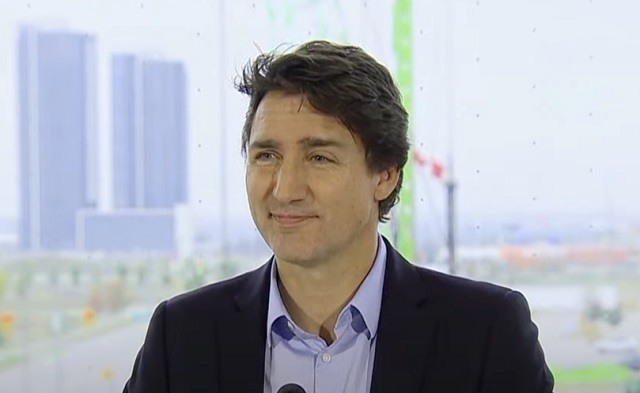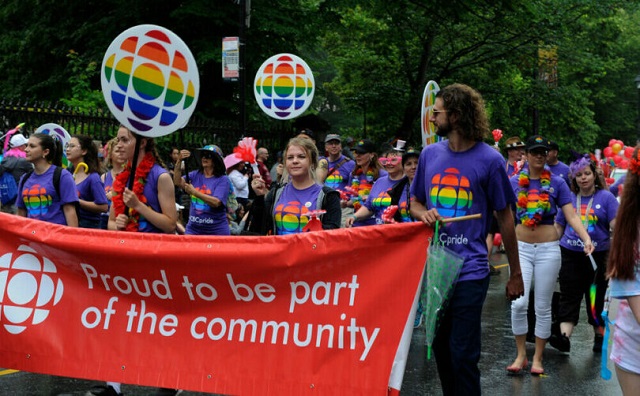Calgary
Is Police Brutality a Racial Issue simply because the Media says so?

For the first time in my lifetime, there is finally a topic that has garnered ubiquitous agreement; George Floyd was murdered. Absolutely nobody is challenging this assertion, and the cop who killed him along with his uniformed accomplices are almost certainly going to spend a long time in jail.
George Floyd’s murder was the spark that lit a powder keg of frustration, pain, and outrage which has exploded across dozens of cities worldwide. His death has been interpreted as proof of the long-held, media endorsed belief that Cops are hunting and killing Black people, as if it was a sport.
Canadian news outlets parrot their American counterparts by repeatedly referring to the killing of Mr. Floyd as, “the RACIST murder of George Floyd”. With relentless repetition, the “racist” murder narrative has easily convinced most people that the cop, Derek Chauvin killed Mr. Floyd, at least in part because of his skin colour. Although no evidence has been presented to suggest that Chauvin had any history of racist comments, or associations with racist organizations, the conclusion by the media has been nearly unanimous.
In criminal law, for a crime to exist, there must be two main elements: Actus Reus, and Mens Reus. Actus Reus is the physical element of the crime, or the “act”, and Mens Reus is the mental element of the crime, or the “intention”. The act is much easier to prove than the intention, but the intention doesn’t have to be proven. Intention can instead be assumed based on circumstances and past history. Now that you have a lesson in Criminal Law 101, you may see a problem with the media narrative of George Floyds’ death being concluded as “racist”.
Although it’s entirely possible that Derek Chauvin was in fact a murderous white supremacist, at this point we don’t have any actual evidence that would help us understand either his intentions, or his personal beliefs. All we know for sure is that Officer Chauvin’s arrest and control procedures were entirely wrong, and were certainly a major factor in the death of Mr. Floyd. Having a knee on a person’s neck for more than a few seconds is not an acceptable practice in any circumstance.
But about those “protests”….
The public is absolutely justified in staging massive protests over the police brutality which caused a man to die unnecessarily. Police must be held accountable for their actions, and change must happen to prevent similar instances in the future. The issue though, isn’t about the protests, it’s about the underlying assumptions being made which are fueling the protests.
First, FBI statistics are not supportive of the assumption that black people die in custody more than white people. Though, there are other stats from other sources which strongly support this assumption, it’s difficult to know which stats to believe. Even if the stats did show, without a doubt that black people die in custody more than white people, the only factor mentioned to explain this is “racism”.
Has anyone asked the obvious question of, …why else could this be happening? What other factors may be at play?
Did you know there is another segment of society who are just as likely to die in custody as black people? Military Veterans. Since this segment can not be identified by race, religion, or heritage, what possible explanation could there be for Veterans to be dying in custody at nearly twice the rate of non-veterans? It seems like a valid question to ask, and even an important question to ask in order for us to be able to better understand why some people die in custody more than others. It seems there must be more to it than racism, but that’s not a question that anyone seems to be interested in asking.
Without the media supported presumption that George Floyd’s murder was motivated by racism, the protests would not likely be morphing into full out criminal riots. When the looting starts, the valid protests end. Adorning your living room with an ill-gotten 75” flatscreen does not honour the life of George Floyd, nor does it provide an argument for defunding the police.
By fueling the violence both the media and many politicians have been partly responsible for the deaths of numerous police officers and civilians of all races. Anger over one death has caused the deaths of many others, and that is not an outcome that can be justified.
In 2016, Tony Timpa died in Police custody in nearly the exact same way as George Floyd. The main difference is that Mr. Timpa wasn’t arrested for committing a crime, instead Mr. Timpa called 911 for help because he was scared, and having a psychotic episode. Tony Timpa asked the police for help, and within 15 minutes of the police arriving, Tony was dead. Timpa was cuffed, and placed on his face with an officer kneeling on his back for several minutes. Like Mr. Floyd, Mr. Timpa begged for help, said he couldn’t breath, and told the officer that they were killing him. The Cops laughed and joked once Timpa lost consciousness, and like Floyd, they did not attempt to resuscitate him.
Tony Timpa happened to be white. The National media showed very little interest in the story, and the arresting officers were not fired, and did not do jail time even though the autopsy concluded the death as a Homicide. The three officers were charged, but the charges were all dropped, and they got off scot-free. If the George Floyd protests are about Police Brutality, then where are the protests for Tony Timpa? Why is his name not mentioned as a precursor to the current situation? It seems that if the accusation of racism can’t be used, then the story will not be run.
The media likes it when you’re angry, and they love it when you’re scared. The more frightened you are, the more you look to the media for answers. The more angry you are, the more likely you are to participate in newsworthy protests. Either way, the media wins at your expense.
You should be outraged at the death of George Floyd, but if you’re not equally outraged about Tony Timpa, then you’re not really interested in Police reform.
Most Police officers are dedicated public servants who are doing an impossible job. I’m not anti-cop in any way. I am however anti-corruption no matter where I find it. Whether it’s in the media, with the Police, within the Government, corruption and abuse of power must be addressed, and fixed. In the absence of good questions, and clear thought, corruption will always flourish.
Mark Meincke
Author, Writer, Podcast Host
Buy the Home Seller’s Bible by clicking HERE
Buy “Why not Me?” HERE
For more stories, visit Todayville Calgary.
Alberta
Building a 21st century transit system for Calgary

From the Frontier Centre for Public Policy
Calgary Transit is mired in the past, building an obsolete transit system designed for an archaic view of a city. Before the pandemic, transit carried 45 percent of downtown Calgary employees to work, but less than 10 percent of workers in the rest of the Calgary urban area, showing that Calgary Transit doesn’t really serve all of Calgary; it mainly serves downtown.
That would have worked in 1909, when Calgary’s first electric streetcars began operating and most jobs were downtown. By 2016, less than 15 percent of Calgary jobs were downtown, and the pandemic has reduced that number further.
Rather than design a transit system that serves the entire urban area, Calgary Transit light-rail system reinforced its downtown focus. Transit ridership has grown since the city’s first light-rail line opened in 1981, but it was growing faster before the light rail began operating than it has since then. Now Calgary Transit is planning even more downtown-oriented light-rail lines.
Light rail is an expensive form of low-capacity transit. The word “light” in light rail refers not to weight but to capacity: the American Public Transportation Association’s transit glossary defines light rail as “an electric railway with a ‘light volume’ traffic capacity.” While a light-rail train can hold a lot of people, for safety reasons a single light-rail line can move no more than about 20 trains per hour in each direction.
By comparison, Portland, Oregon runs 160 buses per hour down certain city streets. An Istanbul busway moves more than 250 buses per hour. Bogota Columbia busways move 350 buses per hour. All these transitways cost far less per mile than light rail yet can move more people per hour.
Once they leave a busway, buses can go on any city street, reaching far more destinations than rail. If a bus breaks down or a street is closed for some reason, other buses can find detours while a single light-rail breakdown can jam up an entire rail line. If transportation patterns change because of a pandemic, the opening of a new economic center, or the decline of an existing center, bus routes can change overnight while rail routes take years and cost hundreds of millions of dollars to change.
To truly serve the entire region, Calgary Transit must recognize that buses are faster, more flexible, and can move more people per hour to more destinations at a lower cost than any rail system. It should also recognize that modern urban areas have many economic centers and use buses to serve all those centers.
Besides downtown, Calgary’s major economic centers—the airport, the University of Calgary, Chinook Center, the Seton health center, and others—are mostly located near freeway on- and off-ramps. Calgary Transit should identify ten or so such centers geographically distributed around the region. It should locate transit centers—which need be no more than curbside parking reserved for buses with some modest bus shelters—near the freeway exchanges closest to each center.
It should then operate frequent (up to five times per hour) non-stop buses from every center to every other center. A few secondary transit centers might have non-stop buses operate to just two or three other centers. Local bus routes should radiate away from each center to serve every neighborhood of the Calgary urban area.
Since non-stop buses will operate at freeway speeds, the average speed of this bus system will be more than double the average speed of Calgary’s current bus-and-rail system. Transit riders will be able to get from any corner of the urban area to any other part of the urban area at speeds competitive with driving.
Such a polycentric system will serve a much higher percentage of the region’s workers and other travelers than the current monocentric system yet cost no more to operate. It will cost far less to build than a single rail line since most of the necessary infrastructure already exists. While some may worry that buses will get caught in congestion, the solution is to fix congestion for everyone, not spend billions on a slow rail system that only serves a few people in the region.
It is time for Calgary Transit to enter the 21st century. A polycentric bus system may be the best way to do it.
Randal O’Toole is a transportation policy analyst and author of Building 21st Century Transit Systems for Canadian Cities.
Alberta
Calgary Ring Road opens 10 months early
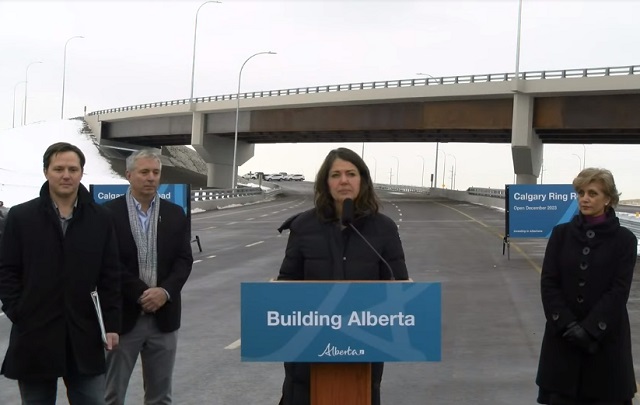
Christmas comes early for Calgary drivers
The Calgary Ring Road is now ready to be opened to public traffic, several months ahead of schedule.
Calgary’s ring road is one of the largest infrastructure undertakings in Calgary’s history and includes 197 new bridges and 48 interchanges. The 101-kilometre free-flowing Calgary Ring Road will open to traffic Dec. 19, completing a project decades in the making.
“Calgary’s ring road is a project that has been decades in the making and its completion is a real cause for celebration. This has been an important project and our government got it done. With this final section completed, travelling just got a little easier for families and for workers. This will not only benefit Calgarians and residents in the metro region, it will provide a boost to our economy, as goods can be transported more easily across our province.”
Although construction of the entire ring road project began in 1999 under former premier Ralph Klein, discussions on a ring road around the City of Calgary began as early as the 1950s. In the late 1970s, under former premier Peter Lougheed, high-level planning and land acquisition started and a transportation utility corridor was established to make the Calgary Ring Road a reality.
“The final section of the Calgary Ring Road is now complete, and I’d like to acknowledge the work done by former premiers and transportation ministers and their vision to build Alberta. I’m proud to announce that the final section was completed on budget and months ahead of schedule.”
“I’m thrilled to see the Calgary Ring Road project completed. It was something I have helped shepherd through the process since 2014. Finally, all the hard work put in by everyone has become a reality. The Calgary Ring Road will provide travellers with over 100 kilometres of free-flow travel, create new travel options for the City of Calgary and surrounding area and provide improved market access across the region.”
Opening the ring road means new travel options for Calgarians, which will draw traffic away from heavily travelled and congested roads such as the Deerfoot Trail, 16th Avenue, Glenmore Trail and Sarcee Trail. For commercial carriers, the ring road provides an efficient bypass route, saving time and money for the delivery and shipment of goods and services.
“The ring road investment generated thousands of local jobs and will now play an integral role in keeping Calgarians and the economy moving. This important transportation link will ease congestion on city routes and greatly improve connectivity and access for businesses transporting goods.”
The ring road is a critical component to growing economic corridors in Alberta and Western Canada, as it connects the Trans-Canada Highway to the east and west, and the Queen Elizabeth II Highway and Highway 2 to the north and south. It is also part of the CANAMEX corridor, which connects Alberta to the highway network in the United States and Mexico.
The completion of the ring road is a major boost for Calgary, opening new business opportunities and supporting key components of the Calgary economy. It sends a signal to businesses and investors that Calgary has a strong highway infrastructure, providing economic corridor connections through the entire region.
“With one of the smoothest commutes in Canada and the capacity to reach 16 million customers by road within a single day, Calgary offers unmatched quality of life and economic opportunities. The triumphant completion of the Calgary Ring Road further improves our capacity to attract even more companies, capital and talent to our city.”
“This is an exciting step forward for the Calgary Metropolitan Region. This key artery will not only improve the quality of life for the residents of the region, it is also a key economic enabler and we are thrilled to see its completion.”
Quick facts
- Stretched into a single lane, the highway is 1,304 kilometres long, the distance from Calgary to Winnipeg.
- Other sections opened in 2009, 2013, 2020 and 2023.
- The West Calgary Ring Road is the final piece of the ring road project.
-

 Business2 days ago
Business2 days agoUS firms like BlackRock are dropping their climate obsession while Europe ramps theirs up
-
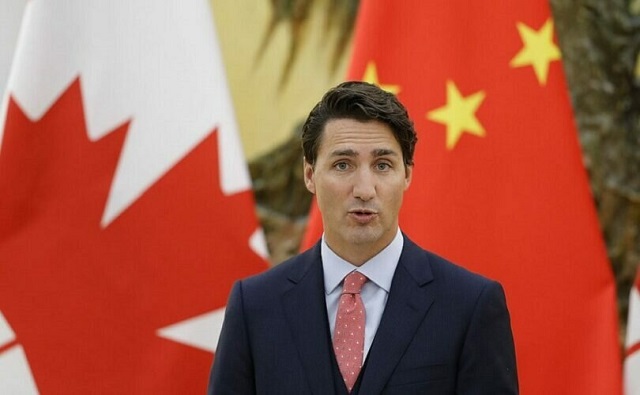
 espionage1 day ago
espionage1 day agoTrudeau’s office was warned that Chinese agents posed ‘existential threat’ to Canada: secret memo
-

 COVID-191 day ago
COVID-191 day agoPro-freedom Canadian nurse gets two years probation for protesting COVID restrictions
-
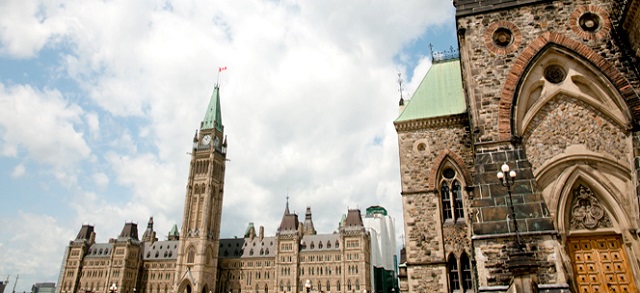
 Economy1 day ago
Economy1 day agoMassive deficits send debt interest charges soaring
-

 International23 hours ago
International23 hours agoBrussels NatCon conference will continue freely after court overturns police barricade
-

 Business23 hours ago
Business23 hours agoBusiness investment key to addressing Canada’s productivity crisis
-

 International2 days ago
International2 days ago28-year-old Dutch woman to be killed by assisted suicide after doctors deem her autism ‘untreatable’
-
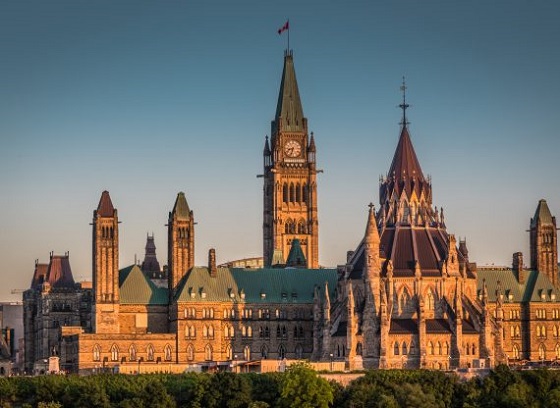
 Economy2 days ago
Economy2 days agoFederal budget: You can’t solve a productivity emergency with tax hikes




